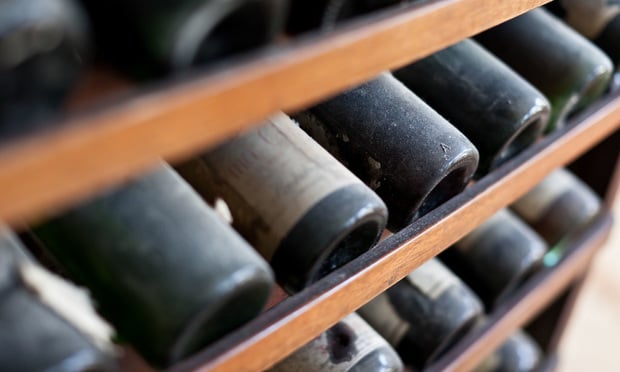Insurance misconceptions place wine collections at risk | PropertyCasualty360
 “Usually with wine collections, people start innocently enough, maybe buy a few cases, but the next thing you know, they are having a wine cellar designed. But it doesn’t occur to them to get separate coverage,” says Melissa L. Smith of Enotrias Elite Sommelier Services. (Credit: Dario Lo Presti/Shutterstock.com)
“Usually with wine collections, people start innocently enough, maybe buy a few cases, but the next thing you know, they are having a wine cellar designed. But it doesn’t occur to them to get separate coverage,” says Melissa L. Smith of Enotrias Elite Sommelier Services. (Credit: Dario Lo Presti/Shutterstock.com)A misconception persists among homeowners that their insurance policies will protect wine collections, when in fact, a separate rider or wine-specific coverage is necessary, according to Melissa L. Smith, certified sommelier and founder of Enotrias Elite Sommelier Services, which specializes in inventorying wine collections.
“Usually, with wine collections, people start innocently enough, maybe buy a few cases. The next thing you know, they are having a wine cellar designed, but it doesn’t occur to them to get separate coverage,” she says.
While some larger insurers will cover wine collections as part of broader coverage that might include homes, life and auto policies, it is harder to find insurance companies that specialize in wine, Smith says.
While floods, hurricanes, power outages and earthquakes can all spell doom for a collection, Smith says the biggest thing during the past few years, at least on the West Coast, has been wildfires.
“Most of the collections in California are in wine country or on the peninsula, so that is a huge issue. We saw during the wildfires entire historic collections become total losses,” she elaborates.
Related: Insurance Speak podcast: Wildfires & wine don’t mix
In addition to assuming their collections are covered, oenophiles are also underappreciating storage risks.
While there are a ton of different wine refrigerators on the market, many place bottles’ wrappings too close together, Smith cautions, continuing: “As soon as a label is scratched, the value of the bottle will go down.”
To the unenlightened, a scratched label on a bottle of wine might seem a minor blemish, but these types of defacements can knock 10%-30% off the value, she explains.
You down with OTP?
A factor that can impact the value of a bottle of wine that is often overlooked is original wooden containers, or OWC, which some types of wines arrive in. There is also OTP, or original tissue paper, Smith says.
“Typically, a white tissue paper is covering the entire bottle, so if there is temperature or humidity fluctuation, it is incredibly evident. No sign of mold or mildew is further insurance of proper storage,” she explains.
When bottles turn up in less than pristine conditions, it also raises the specter of counterfeits, which Smith says takes incredible specialization to spot.
“A lot of it goes to intuition. Once you’ve been dealing with these bottles for a long time, you should know what a typical label looks like, how the ink sets, the closures, how the bottles age, and the color of the wine inside,” she says. “A lot of it comes down to the quality and precision of the label, things like ink and knowing how they are printed. More high-end bottles now have QR codes and special labels with bubble systems that show if it has been tampered with.”
Related:


0 Commentaires